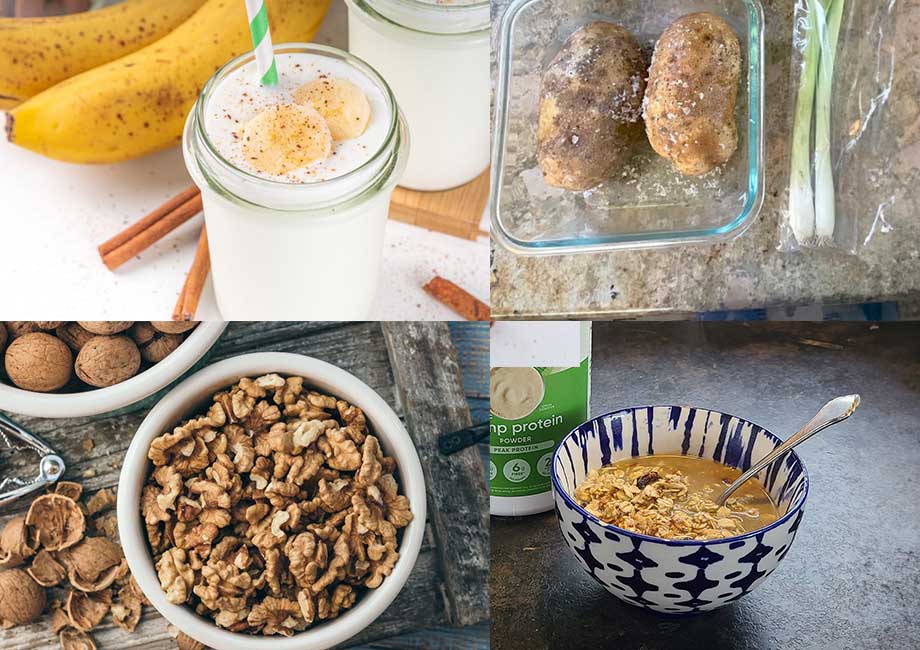We test and review fitness products based on an independent, multi-point methodology. If you use our links to purchase something, we may earn a commission. Read our disclosures.
When it comes to fitness, you know the importance of fueling yourself well for energy in the gym, losing fat, gaining muscle, and feeling your best. The food on your plate either helps or hinders your physical progress.
RELATED: High-Protein Foods for Muscle Building
It turns out your meal plan also has the power to influence health at the microscopic level. We’re talking about your gut microbiome, which is made up of trillions of good bacteria, fungi, viruses, yeasts, and more that live in the lower part of your digestive system. You may not be able to see them, but these microbes play a pivotal role in supporting your well-being from the inside out.
Enter the probiotic and prebiotic trend. Perhaps you’ve noticed prebiotics listed on the labels of more foods, beverages, and digestive health supplements lately. The term looks and sounds an awful lot like probiotics, making it easy to think perhaps they’re the same or can be used interchangeably.
RELATED: Best Prebiotics
While probiotics hog the spotlight around digestive health, prebiotics are just as important. Think of it this way: foods with live strains of bacteria, like yogurt, and probiotic supplements help deliver beneficial organisms—aka probiotics—to your digestive system. Once those microorganisms have established residence in your gut, they need prebiotics to keep them alive and well.
In this article, we’ll cover what prebiotics are, how they work, and why they’re worth paying attention to. We’ll also give you a rundown of the best prebiotic foods you can start eating today to ensure you’re giving your gut microbiota what it needs to thrive.
Medical disclaimer: This article is intended for educational and informational purposes only. It is not intended as a substitute for medical advice. For health advice, contact a licensed healthcare provider.
Best Prebiotic Foods: Quick Summary
The International Science Association of Probiotics and Prebiotics1 (ISAPP) defines prebiotics as “a substrate that is selectively utilized by host microorganisms conferring a health benefit.”
Essentially, prebiotics are food for the living microorganisms that make up your gut microbiome. Just like you and I, these living organisms require nutrition to thrive.
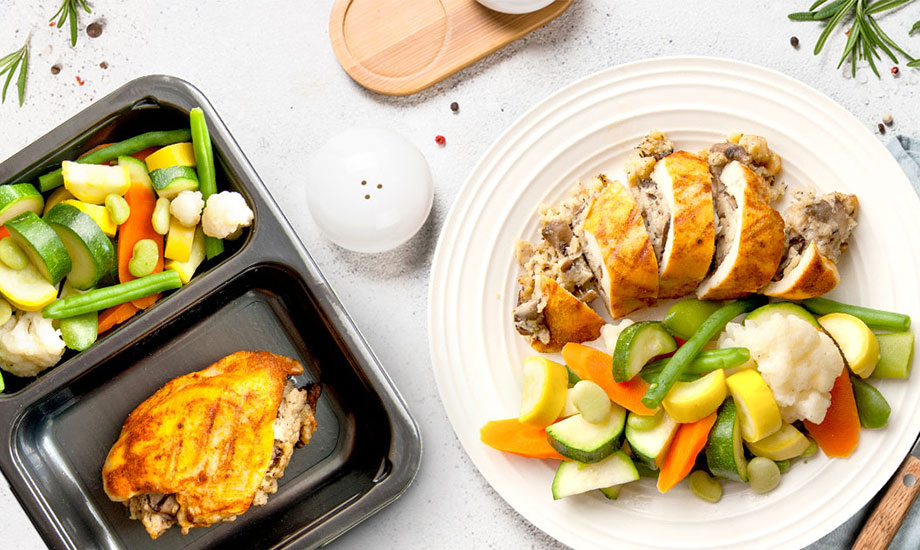
Prebiotics can refer to various types of fiber found in plant foods or supplements that contain prebiotic fibers. Your gastrointestinal tract lacks the ability to break down these fibers, but the microorganisms in your gut use them for fuel.
There are several types of dietary fiber2 that exert prebiotic effects, including:
- Beta-glucans
- Fructooligosaccharides (FOS)
- Galactooligosaccharides (GOS)
- Inulin
- Oligofructose
Some of the best foods to feed the healthy bacteria in your gut are:
- Asparagus
- Bananas
- Barley
- Dandelion greens
- Garlic
- Jerusalem artichoke
- Leeks
- Legumes
- Nuts
- Oats
- Onions
- Potatoes
- Seeds
A diet that includes both probiotics and prebiotics from food and/or dietary supplements can support a balanced gut microbiome, better digestive health, and more.
RELATED: Best Probiotic
Health Benefits of Prebiotics
Prebiotics support a healthy balance of beneficial organisms in your gut by providing the food they need to keep alive, reproduce, and carry out their various functions. In case you need a refresher, your microbiome aids digestion and nutrient absorption, and synthesizes some vitamins.
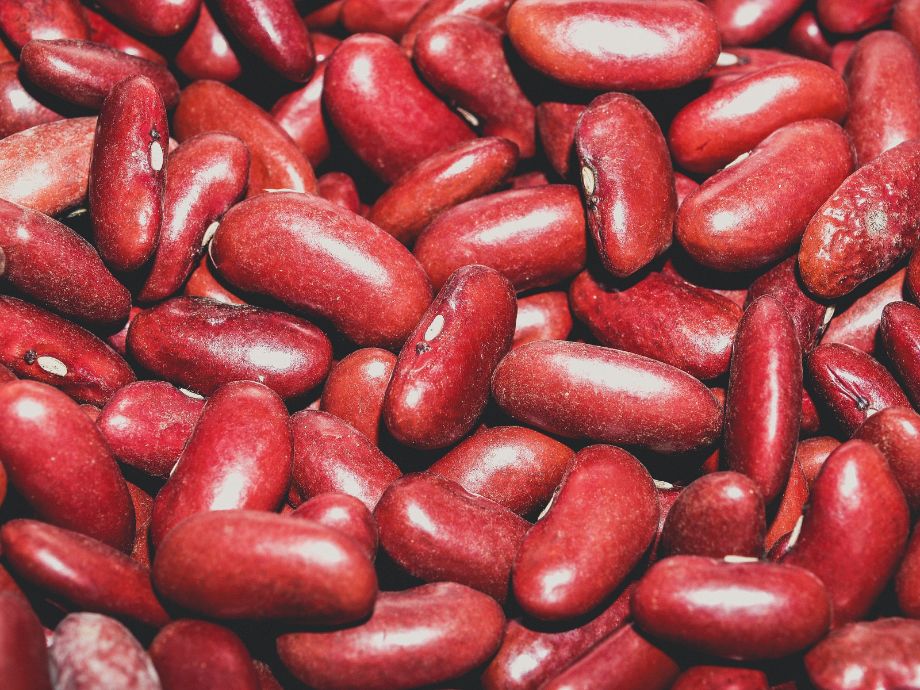
The gut microbiome also plays a big role in immune function and researchers are now making connections between the health of your gut and metabolic health, brain health, heart health, and more. A healthy microbiome is also considered protective against the development of chronic illness, including heart disease and Type 2 diabetes.
Besides supporting a healthy population of organisms in your gut, prebiotics are also linked to the following health benefits2:
- Supports weight loss3
- Regular bowel movements4 and relief from constipation
- Decreased bloating
- Improved symptoms of irritable bowel syndrome
- Boosted immune system function5
- Better blood sugar control
- Improved cholesterol levels
- Decreased inflammation
How do prebiotics provide so many benefits? The answer is: by producing the short chain fatty acids (SCFAs) acetate, butyrate, and propionate. The organisms in your gut create SCFAs as a byproduct of chowing down on all the prebiotic fibers you feed them.
SCFAs6 play a role in all of the above benefits, plus they provide nutrition to the cells that line your intestines and colon. Keeping your digestive lining healthy is important for proper nutrient absorption and keeping harmful substances, like viruses and toxins, from crossing the intestinal barrier.
The bottom line? A well-fed gut microbiome is foundational for full-body wellness.
Best Prebiotic Foods
The best prebiotic foods are plant-based foods. Besides containing prebiotic fibers, these foods are nutrient dense, providing you with vitamins, minerals, and antioxidants that support overall health.
Here are 11 foods with prebiotic fibers to enjoy more of for improved health:
1. Asparagus
Picking up a bunch of asparagus on your next grocery run is an easy way to feed your gut microbiome. Asparagus is a highly versatile vegetable that’s available year-round and contains the prebiotic fiber inulin. Grill or roast it for an easy side dish, add chopped asparagus to stir-fries, or blanch and add to salads and omelets.
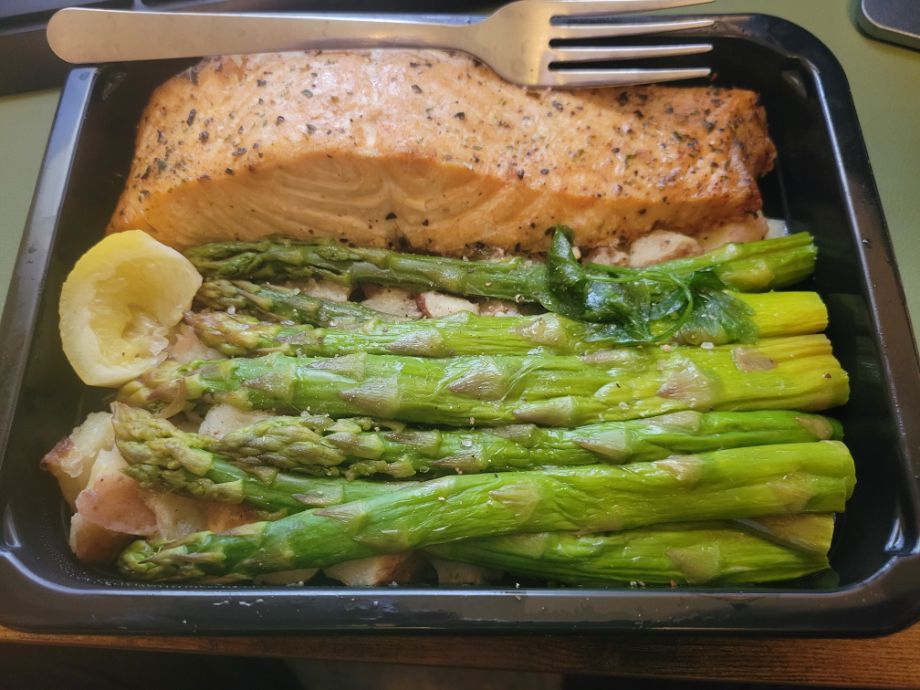
2. Bananas
Besides being a good source of potassium, bananas also contain carbohydrates in the form of resistant starch. Resistant starch7 can’t be digested and acts as a prebiotic to feed certain types of bacteria in the gut.
The trick to using bananas as a prebiotic food is to eat more bananas while they’re still firm with semi-green peels. Under-ripe bananas contain more resistant starch. As they ripen, the peel turns yellow with brown spots and all that beneficial resistant starch is converted to sugar.
If you prefer your bananas on the sweeter side, mask the taste of an under-ripe banana by adding it to a smoothie with other fruit and/or flavored protein powder.
3. Barley
Barley is a whole grain that contains a special type of soluble fiber (i.e., it dissolves in liquid) called beta-glucans8. In addition to acting as a prebiotic, beta-glucans have also been linked to health benefits9, including improved heart health, blood sugar control, and immunity.
You can increase your barley intake by prepping a large batch at the start of the week and using it in multiple meals. Try serving it as a side, adding it to soups in place of rice or pasta, using it as the base of a grain bowl, or adding a scoop to green salads for extra heartiness.
4. Chicory Root
Chicory root is high in the prebiotic fiber inulin. Researchers have found including chicory root10 in the diet helps increase the number of beneficial bacteria in the gut. Eating chicory root has also been linked to appetite regulation and improved levels of blood lipids and blood sugar.
It might be hard to find fresh chicory root, but you can find chicory granules that can be brewed with coffee and ground chicory that can be added to smoothies or baked goods.
RELATED: Protein Smoothie Recipes
5. Dandelion Greens
Dandelion greens are the leafy part of the yellow flowering weeds you find sprouting in backyards everywhere. They may not be a staple veggie in your diet, but you might want to reconsider that because dandelion greens are considered the top food source of prebiotics.
The International Science Association of Probiotics and Prebiotics (ISAPP) recommends eating a minimum of 5 grams of prebiotics per day1 for health benefits. A 2023 presentation11 from the 2023 American Society for Nutrition annual conference reports eating just under 1 ounce of dandelion greens provides enough prebiotics to satisfy this recommendation. Dandelion greens12 contain the fiber inulin, with an estimated 155-253 milligrams of prebiotics per gram of dandelion greens.
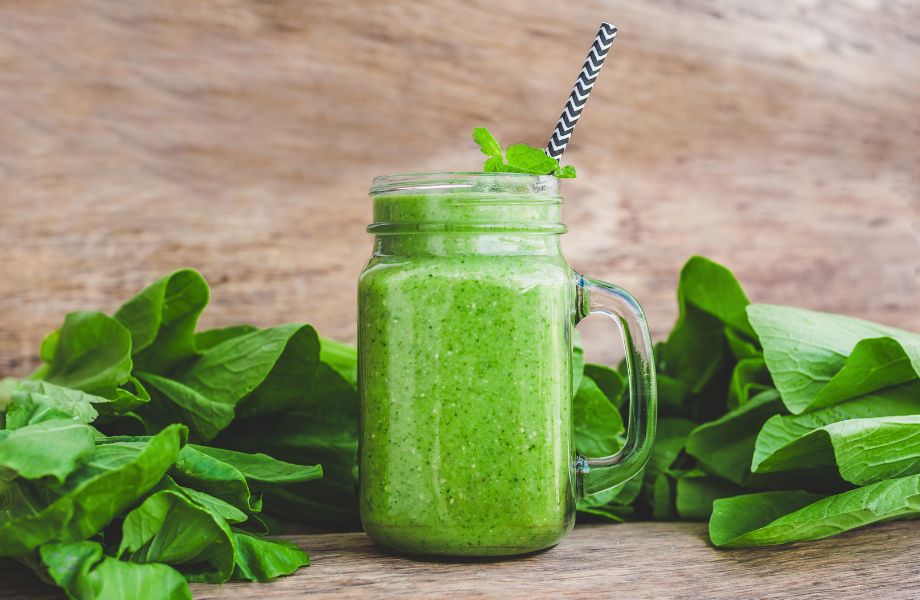
Look for fresh dandelion greens in the produce section of specialty grocery stores, especially during spring months when they’re in season. Enjoy them raw in salads, toss a handful in a post-workout smoothie, or saute in oil with garlic and spices until wilted, similar to spinach.
6. Garlic
Garlic lovers will be happy to know this fragrant and flavorful pantry staple contains prebiotics13 to help beneficial gut bacteria thrive. You can add a few cloves of garlic to almost any savory recipe, including salad dressings, cooked proteins, pasta sauce, soup, stir-fries, and casseroles.
RELATED: High-Protein Foods
7. Jerusalem Artichoke
Not to be confused with regular artichokes, Jerusalem artichokes, also called sunchokes, are related to the sunflower plant and resemble lumpy brown potatoes. Jerusalem artichokes14 are rich in the prebiotic fiber inulin.
Look for Jerusalem artichokes during the late fall and winter months. They can be eaten raw or cooked. If you’ve never had them, start by thinly shaving them and adding to a salad for crunch or chopping and roasting them with oil and herbs, just like you would with potatoes.
8. Leeks
If you like changing up the ingredients you cook with, try leeks in place of onions. Like onions and garlic, leeks15 are part of the allium family and contain the prebiotics fructooligosaccharides and inulin. Including a greater variety of plant foods can help you consume more varieties of prebiotics.
Leeks have a milder flavor than most varieties of onion and can be used in any dish you’d use onion—think soups, sauces, stews, and casseroles, as well as topping pizza and salads.
9. Oats
Oats are another whole grain that contain beta glucan fiber. Oat consumption16 has been extensively studied and linked to health benefits, like reductions in unhealthy cholesterol, improved blood sugar control, and weight control.

Need some ideas to enjoy more oats? Try a bowl of protein oatmeal (add protein powder to cooked oats) for breakfast, add a scoop to blended protein shakes and smoothies, use oats as the base of a savory grain bowl, or grind oats into flour to bake with.
RELATED: How Much Protein Is in Oatmeal?
19. Onions
Like leeks, onions contain the prebiotic fibers fructooligosaccharides and inulin. For even more flavor and nutrient variety, alternate between white onions, sweet onions, red onions, green onions, and shallots. Saute onions in a bit of oil to start sauces, soups, and stews, or try pickling them for salads and sandwiches in a mixture of vinegar, sugar, and salt.
RELATED: Best Salad Delivery Service
11. Chia Seeds and Flax Seeds
Both chia and flax seeds17 contain healthy fats, protein, and prebiotic fibers. You can buy these seeds whole or ground and they’re easy to add to a variety of recipes.
Both seeds can be added to smoothies, pancakes, waffles, baked goods, or oat bowls. You can also sprinkle the seeds on salads or use them as a smoothie bowl topping. Try soaking whole chia seeds overnight in milk to create chia pudding or soaking ground flaxseed in water to create a vegan-friendly egg replacement for baking.
Best Prebiotic Foods: Final Thoughts
Prebiotics refer to types of fiber found in plant foods. Prebiotics are not digestible by humans, but they are used to fuel the microorganisms—aka probiotics—living in your digestive system. Eating a high fiber diet helps deliver food to your gut bacteria, which helps maintain a healthy balance of bacteria in your gut and keeps your gut bacteria performing its job.
- Both probiotics and prebiotics are needed to support a healthy and diverse gut microbiome.
- Like probiotics, you can get prebiotics from food and/or digestive health supplements.
- Prebiotics are primarily found in plant foods and are not present in meat, seafood, eggs, dairy products, or oils.
- Eating more fruit, vegetables, nuts, seeds, whole grains, and legumes can help you increase prebiotics intake.
Best Prebiotic Foods: FAQs
What food is highest in prebiotics?
Many plant foods, like vegetables, beans, and seeds, contain prebiotics. A list of the highest prebiotic-containing foods was presented at the 2023 American Society for Nutrition annual conference. According to the list, the top five foods with the most prebiotics are dandelion greens, Jerusalem artichokes, garlic, leeks, and onions.
What is the best prebiotic for the gut?
Eating a variety of prebiotic foods is best for gut health. “Prebiotics” is a general term for different types of fiber that deliver food to the organisms living in your digestive tract. There are thousands of different probiotics in your gut and each type prefers different types of prebiotic fiber. The best way to ensure all of your probiotics get their favorite food is to eat a balanced diet that includes plenty of plant foods, including fruit, vegetables, whole grains, beans, lentils, nuts, and seeds.
How can I increase my prebiotic intake?
Eating more plant foods and increasing the grams of fiber you eat in a day can help you boost prebiotic intake. Fruit, vegetables, legumes, and whole grains contain types of fiber that are natural sources of prebiotics. Including fruit and vegetables at each meal and eating several servings of whole grains, legumes, nuts, and seeds throughout the week can provide the prebiotics you need to support a healthy gut microbiome for optimal digestion and other health benefits.
What is a prebiotic superfood?
A prebiotic superfood is a nutrient-dense food that also contains prebiotics. The food may be a good source of macronutrients, vitamins, minerals, antioxidants, and/or other plant compounds linked to health benefits, in addition to having prebiotic fiber. Nuts and seeds are one example of a prebiotic superfood. They contain healthy fats, protein, fiber, vitamins, minerals, and polyphenol antioxidants.
These statements have not been evaluated by the Food and Drug Administration. This product is not intended to diagnose, treat, cure, or prevent any diseases.
References
- Prebiotics. International Scientific Association for Probiotics and Prebiotics. Accessed January 7, 2023.
- Davani-Davari, D., Negahdaripour, M., Karimzadeh, I., Seifan, M., Mohkam, M., Masoumi, S. J., Berenjian, A., & Ghasemi, Y. (2019). Prebiotics: Definition, Types, Sources, Mechanisms, and Clinical Applications. Foods (Basel, Switzerland), 8(3), 92. https://doi.org/10.3390/foods8030092
- Álvarez-Arraño, V., & Martín-Peláez, S. (2021). Effects of Probiotics and Synbiotics on Weight Loss in Subjects with Overweight or Obesity: A Systematic Review. Nutrients, 13(10), 3627. https://doi.org/10.3390/nu13103627
- Naseer, M., Poola, S., Uraz, S., & Tahan, V. (2020). Therapeutic Effects of Prebiotics on Constipation: A Schematic Review. Current clinical pharmacology, 15(3), 207–215. https://doi.org/10.2174/1574884715666200212125035
- Pujari, R. and Banerjee, G. (2021), Impact of prebiotics on immune response: from the bench to the clinic. Immunol. Cell Biol., 99: 255-273. https://doi.org/10.1111/imcb.12409
- Xiong, R. G., Zhou, D. D., Wu, S. X., Huang, S. Y., Saimaiti, A., Yang, Z. J., Shang, A., Zhao, C. N., Gan, R. Y., & Li, H. B. (2022). Health Benefits and Side Effects of Short-Chain Fatty Acids. Foods (Basel, Switzerland), 11(18), 2863. https://doi.org/10.3390/foods11182863
- Patterson, M. A., Maiya, M., & Stewart, M. L. (2020). Resistant Starch Content in Foods Commonly Consumed in the United States: A Narrative Review. Journal of the Academy of Nutrition and Dietetics, 120(2), 230–244. https://doi.org/10.1016/j.jand.2019.10.019
- Arena, M. P., Caggianiello, G., Fiocco, D., Russo, P., Torelli, M., Spano, G., & Capozzi, V. (2014). Barley β-glucans-containing food enhances probiotic performances of beneficial bacteria. International journal of molecular sciences, 15(2), 3025–3039. https://doi.org/10.3390/ijms15023025
- Ciecierska, A., Drywień, M. E., Hamulka, J., & Sadkowski, T. (2019). Nutraceutical functions of beta-glucans in human nutrition. Roczniki Panstwowego Zakladu Higieny, 70(4), 315–324. https://doi.org/10.32394/rpzh.2019.0082
- Pouille, C. L., Ouaza, S., Roels, E., Behra, J., Tourret, M., Molinié, R., Fontaine, J. X., Mathiron, D., Gagneul, D., Taminiau, B., Daube, G., Ravallec, R., Rambaud, C., Hilbert, J. L., Cudennec, B., & Lucau-Danila, A. (2022). Chicory: Understanding the Effects and Effectors of This Functional Food. Nutrients, 14(5), 957. https://doi.org/10.3390/nu14050957
- Boyd C, Gieng J. Determination of the Prebiotic Content of Foods in the 2015-2016 Food and Nutrient Database for Dietary Studies (FNDDS). American Society for Nutrition Poster Presentation. 2023.
- Li, Y., Chen, Y., & Sun-Waterhouse, D. (2022). The potential of dandelion in the fight against gastrointestinal diseases: A review. Journal of ethnopharmacology, 293, 115272. https://doi.org/10.1016/j.jep.2022.115272
- Zhao, R., Qiu, Z., Bai, X., Xiang, L., Qiao, Y., & Lu, X. (2022). Digestive properties and prebiotic activity of garlic saccharides with different-molecular-weight obtained by acidolysis. Current research in food science, 5, 2033–2044. https://doi.org/10.1016/j.crfs.2022.10.022
- Sawicka, B., Skiba, D., Pszczółkowski, P., Aslan, I., Sharifi-Rad, J., & Krochmal-Marczak, B. (2020). Jerusalem artichoke (Helianthus tuberosus L.) as a medicinal plant and its natural products. Cellular and molecular biology (Noisy-le-Grand, France), 66(4), 160–177.
- Chow J. (2002). Probiotics and prebiotics: A brief overview. Journal of renal nutrition : the official journal of the Council on Renal Nutrition of the National Kidney Foundation, 12(2), 76–86. https://doi.org/10.1053/jren.2002.31759
- Paudel, D., Dhungana, B., Caffe, M., & Krishnan, P. (2021). A Review of Health-Beneficial Properties of Oats. Foods (Basel, Switzerland), 10(11), 2591. https://doi.org/10.3390/foods10112591
- Kaur, A. P., Bhardwaj, S., Dhanjal, D. S., Nepovimova, E., Cruz-Martins, N., Kuča, K., Chopra, C., Singh, R., Kumar, H., Șen, F., Kumar, V., Verma, R., & Kumar, D. (2021). Plant Prebiotics and Their Role in the Amelioration of Diseases. Biomolecules, 11(3), 440. https://doi.org/10.3390/biom11030440
Further reading

In our Daily Harvest vs Sakara Life comparison, we’ll take a look at these two plant-based meal deliveries to see which one fits your needs best. Read more

In our Naked Greens review, GGR's nutrition experts share all you need to know about this 10-ingredient, stripped-down greens powder. Read more

Looking for the best vegan protein powder for your training goals? We’ve got you covered. Read more

There are a lot of claims speaking on possible benefits, but can you dry scoop creatine? We’ll look into the real potential risks of this social media trend. Read more

